Serengeti is an African wilderness that stretches as far as the eye can see. Popular for its wildlife and the Great Wildebeest Migration, a Serengeti safari has a lot on offer.
I've been fortunate enough to visit the Serengeti twice.
In this article I share all my top tips on going on a safari in the Serengeti.
Specifically, you'll find out when is the best time to go, where are the most luxurious and budget-friendly accommodation options, and what types of safaris are on offer.
Let's get started.
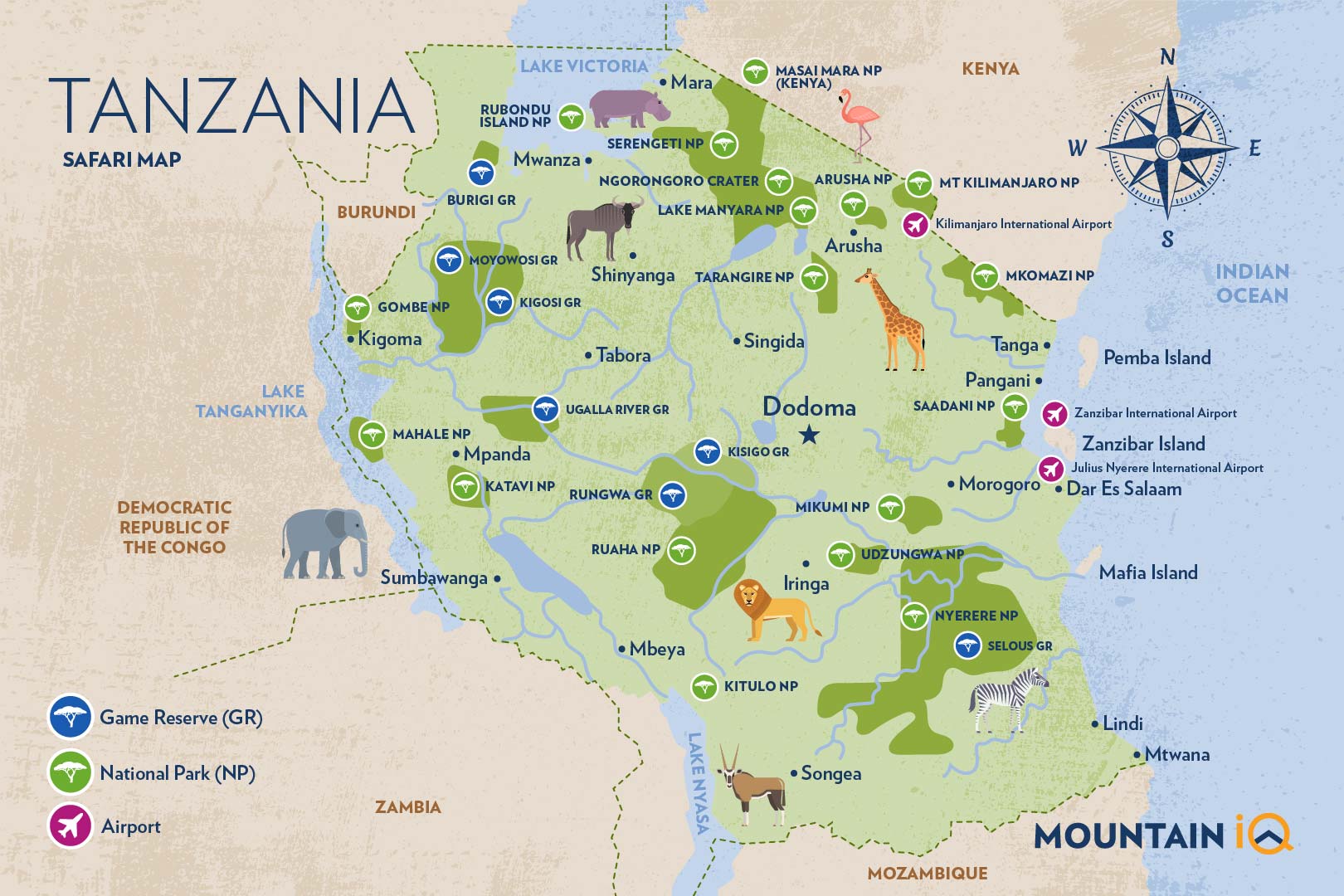
The Serengeti National Park is situated in Northern Tanzania and borders with Kenya.
Serengeti Safari FAQs
Before we jump into the most frequently asked questions, it's worth orientating yourself using the Tanzania Safari Map above. As you'll see the Serengeti is a massive park, measuring 14,763 square kilometres. It's part of Tanzania's famous Northern Circuit, and is usually accessed from Arusha, a town south-east of the park.
In a rush? Here are 5 Serengeti safari tours I recommend:
- Group Camping Safari that includes Tarangire and Ngorongoro (4 days)
- Budget Serengeti Safari (5 days)
- Scenic Northern Tanzania Safari (7 days)
- Serengeti Trail that includes Ngorongoro (8 days)
- Best of Kenya and Tanzania (incl. 6 national parks) (12 days)
See more Serengeti safari deals.
What is the best month to visit the Serengeti?
The peak season from July to October are the best months to go on a safari to the Serengeti as the weather is dry, the wildlife is in abundance and vegetation relatively sparse, which makes viewing easier.
Below is a month-by-month guide to timing your Serengeti safari based on what you want to see.
January-March: Calving Season
Large herds of wildebeest and zebra are gathered in the southern Serengeti and Ngorongoro Conservation Area. January-February also offers a brief dry spell between the rainy seasons.
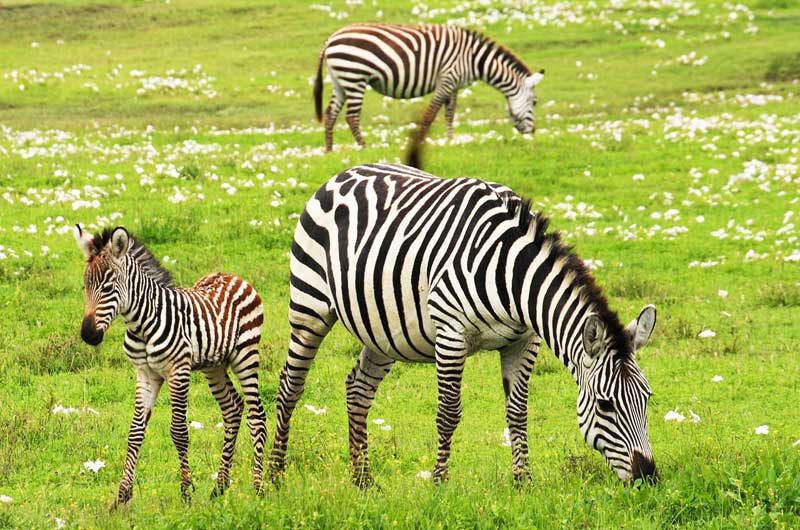
March-May: Out of Season
This is the rainy season so not all of the lodges are open and some roads are inaccessible. Selous Game Reserve and Ruaha National Park are effectively closed during this time, however, the Seronera region has good sightings all year round. Benefits to travelling out-of-season are that there are fewer tourists and safaris and accommodation cost less. Dunia Camp’s rates in April and May are half that of peak season.
May-July: Western Corridor and Seronera
Some wildebeest herds are in the lesser-visited Western Corridor or Grumeti section of the park where visitors may see smaller river crossings. Mobile Camps are set up in central Serengeti which is known for sightings of the big cats.
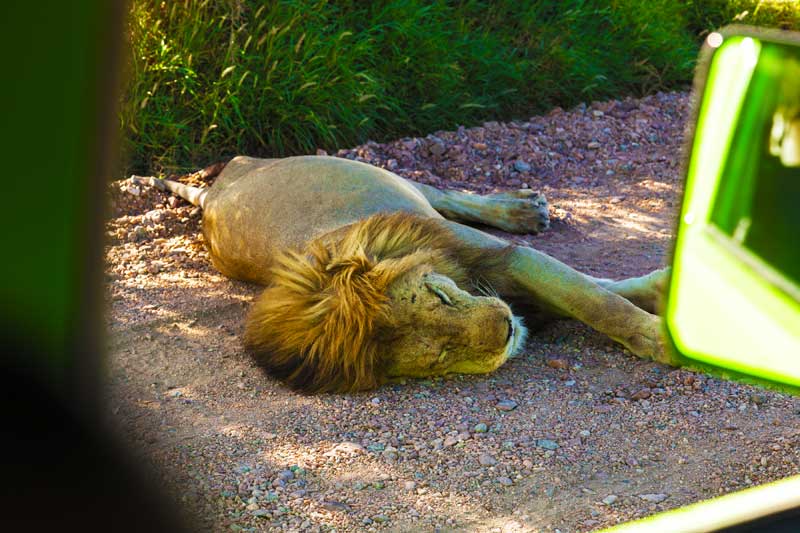
July-October: Dry or Peak Season
The sparse vegetation and gatherings of animals around the water make this the best time for wildlife viewing. This is also the best time to see river crossings at the Mara River in northern Serengeti. Expect more people and vehicles around sightings.
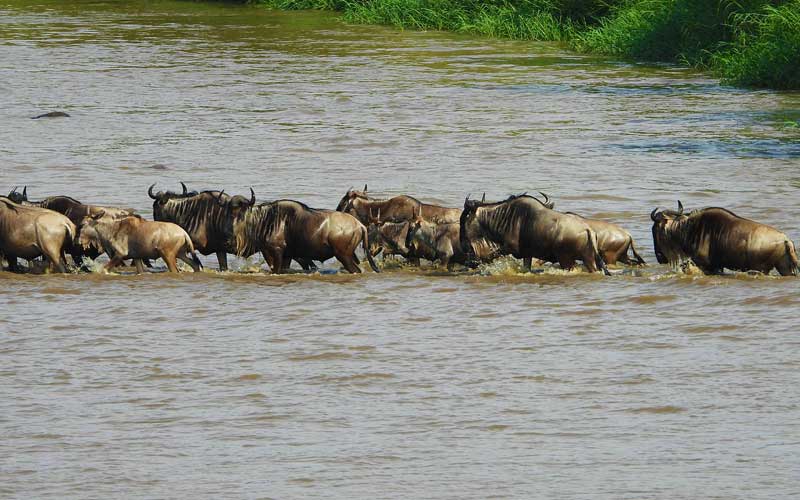
November-December: The Short Rainy Season
For bird lovers, November to April is the best time of year as many species are in breeding plumage and European and African migrant birds are around.
Wet weather also means fewer people and lower prices. Depending on the year, rains could come early or late, so if you are well prepared the risk may be worth it.
How much does a safari in the Serengeti cost?
The average Serengeti safari tour will cost around $1,000 per person for 3-4 days or $1,300 for 5-6 days.
However, the cost depends on how long you're planning on staying and other critical factors like the safari type (private or group tours), transportation (flights), meals, and accommodation (camping or lodges).
Luxury safaris are generally longer with more time in each area and a cost upwards of $10,000 per person. Whereas budget Tanzania safaris can cost as little as $150 per day.
Learn more about Tanzania safari costs and the best safari tour operators in Tanzania. You can also check out which Tanzania safari packages suit you best and how to prepare for your next great adventure.
Additional experiences like hot air ballooning in the Serengeti (from $500 per person) will make your stay extra special. It is worth budgeting for optional extras.
Book a Serengeti Balloon Safari
Get a quote from our recommended local operator
Please Note: Many lodges and camps offer specials for multi-night stays. Shop around before you book.
How long should I spend in the Serengeti?
There is so much to see in the Serengeti so ideally, you’d spend at least a week, but you could conceivably spend two weeks.
If possible, include other areas like the Ngorongoro Crater, Lake Manyara and Tarangire National Park.
Most Serengeti safari tours start at Arusha and stop overnight in popular spots, including some combination of the national parks.
If possible, book to stay longer in more remote areas. This way you avoid rushing between tourist attractions and get to experience a more authentic safari. A longer stay gives you time to explore remote areas and enjoy special experiences.
Bookings should be made as far in advance as possible because the best accommodation and tours fill up quickly, especially over peak season.
Plan your Safari experience
Get a quote from our recommended local safari operator
Which is the best Serengeti safari option?
There are literally 100s of Serengeti safari tour operators, each offering loads of different types of tours.
Here are some of my favourite safari tours:
- Group Camping Safari that includes Tarangire and Ngorongoro (4 days)
- Budget Serengeti Safari (5 days)
- Scenic Northern Tanzania Safari (7 days)
- Serengeti Trail that includes Ngorongoro (8 days)
- Best of Kenya and Tanzania (incl. 6 national parks) (12 days)
See more Serengeti safari deals.
Night safaris are not offered in the Serengeti National park borders but are available in areas just outside of the park, including Singita’s Sasakwa, Faru Faru and Sabora. Here you might encounter such nocturnal creatures as bat-eared foxes, aardvark, aardwolf, porcupine, bush babies and African civets.
What is the difference between the Serengeti, Ngorongoro and Masai Mara?
The differences between Serengeti, Ngorongoro and Masai Mara come down to four important factors: geography, size, varieties in wildlife and tourist populations.
While Serengeti and Ngorongoro are 200km (about 124 mi.) apart in Northern Tanzania, Masai Mara is on the south-west border of Kenya and 192km (about 119 mi.) from Serengeti.
Of the three, Serengeti National Park is the largest conservation area, measuring 14, 763 km² (about 5700 sq mi), whereas the Masai Mara National Park is 1,510 km² (roughly 583 sq mi) and the Ngorongoro Crater is 264 km² (roughly 102 sq mi). In layman terms, Serengeti is about 20 times the size of Masai Mara while Masai Mara is 7 times the size of Ngorongoro.
Other differences include what wildlife species can be found in each region. Serengeti boasts 35 species of wildlife (with numerous wildebeest, lions, birds and zebras) and the setting of 80% of the wildebeest migration route. In Serengeti, there are always migrating herds. In comparison, Ngorongoro is home to over 300 wildlife species (like flamingos, hyenas, jackals and cheetahs) while Masai Masa boasts 90 wildlife species (as well as giraffes, hippos, cheetahs and zebras). Also, unlike Serengeti and Masai Mara, you will only be able to see certain animals like giraffes, impalas and crocodiles in the Ngorongoro Conservation Area, but not in the crater itself.
With that said, Serengeti, Ngorongoro and Masai Mara do share some commonalities, like the popular wildebeest migration and notable sightings of the Big 5.
When it comes to choosing tourist destinations, Tanzania is generally less crowded than Kenya which makes for a more exclusive safari. Unless seeing Kenya is your goal, Tanzania is generally the better safari option.
It might just be that a combined Kenya and Tanzania safari package is more practical so you can get the best of both worlds.
What wildlife will I see in the Serengeti?
The Serengeti has over 1.5 million wildebeest and 250,000 zebra. It also has over 35 species of plain animals, and the largest lion population (roughly 3000 lion) in Africa.
Of all the Serengeti Animals, the Big 5 are the most sought after and you'll be pleased to hear that the Serengeti has all of them.
There are also more than 540 species of birds recorded in the Serengeti. Some of them cannot be found anywhere else in the world! Many companies offer specialist birdwatching safaris.
In terms of the Big 5, here are some top tips to see them:
- Elephants avoid the noisy herds of wildebeest and zebra but occur in large numbers across the park along with giraffes, eland and other antelope species.
- Buffalos prefer to hang out close to water and rivers which are also where you can spot crocodiles and hippos.
- Big cats and other predators like hyenas follow the herds. Leopards and lions are especially common in the Seronera region.
- The Black rhino is present in the park but in low numbers and difficult to find, consider yourself especially lucky if you get to see one!
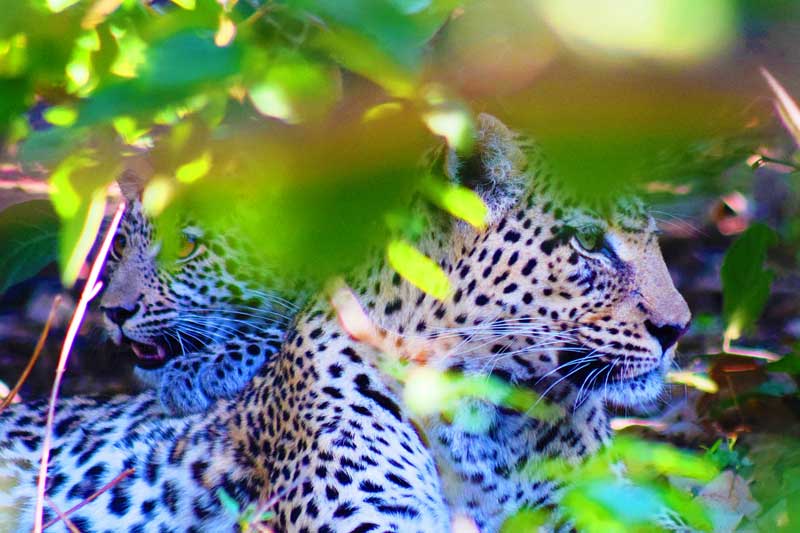
When is the best time to see the wildebeest migration in the Serengeti?
The best time to see the great migration in the Serengeti depends on the month you plan to go on safari. The map below gives you a rough indication where the migrating herds are in the park by month.
Find out more about the great wildebeest migration.
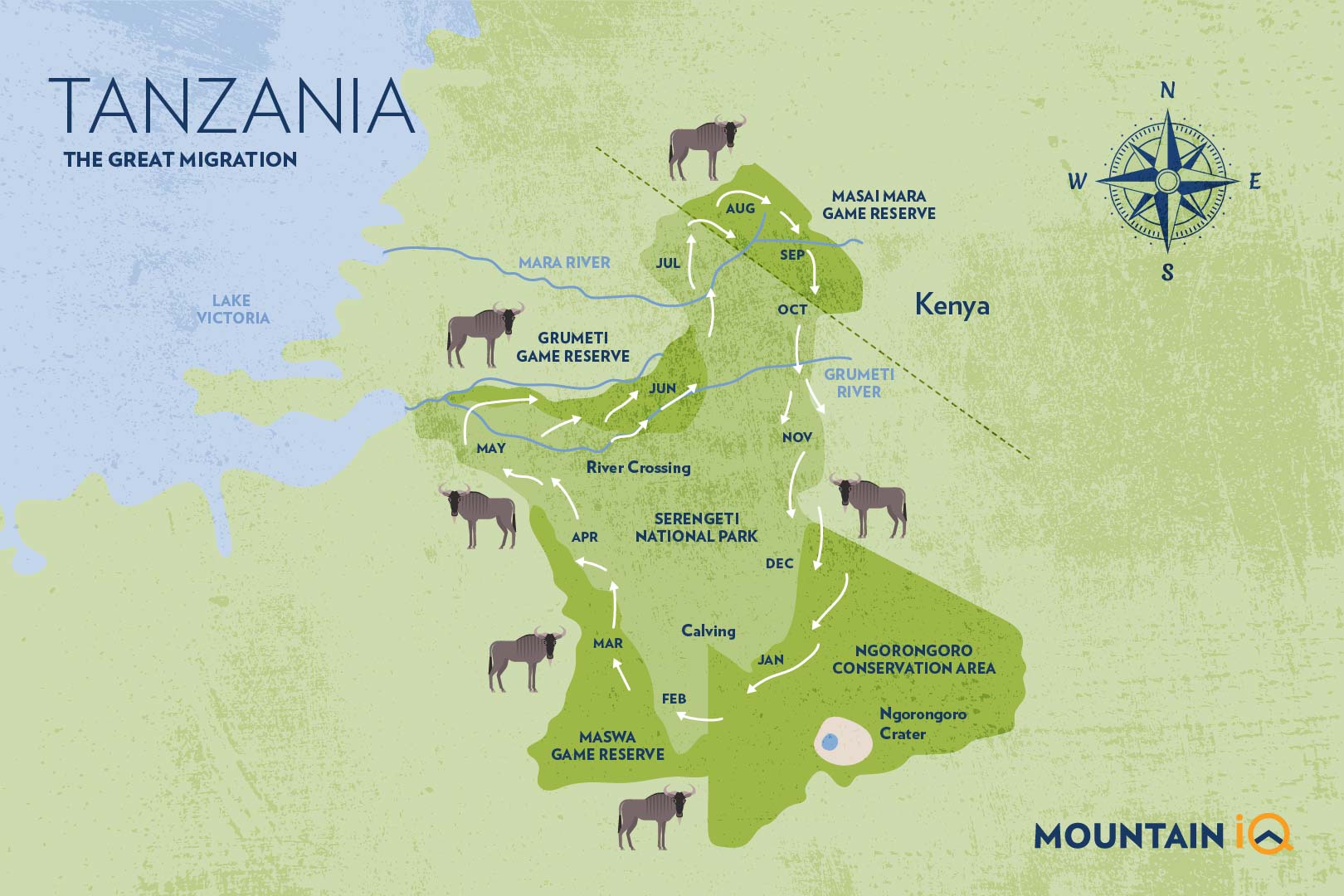
What accommodation options are there on a safari in the Serengeti?
There are three main accommodation options on a Serengeti safari: camping, mobile camps and lodges.
Camping
A great option for adventurous souls. Camping equipment can be rented or you can book camping trips through some safari operators. There are two main campsites in the Serengeti National Park: Seronera and Lobo.
Campsites have very basic facilities of public bathrooms and a communal area for cooking. Camping is the most affordable option, but it is not for everyone.
See camping options.
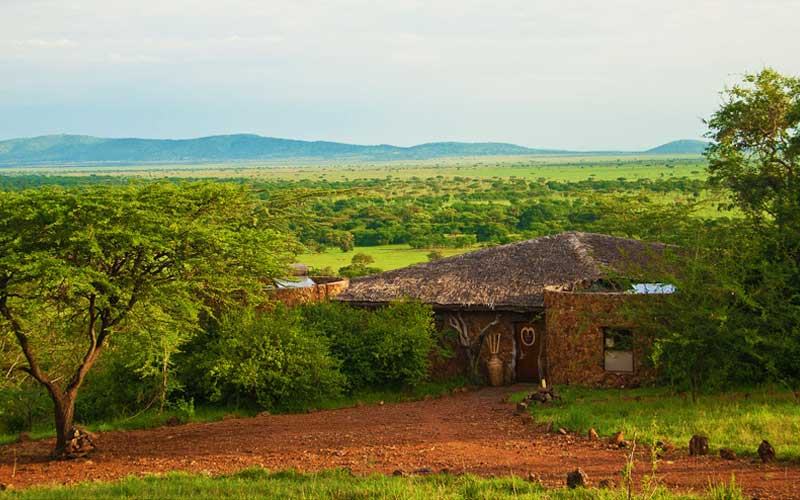
Mobile Camps
This is the ultimate combination of privacy and luxury (and your own bathroom!) with the feeling of being up close to nature. Sleep in a real bed and still hear the leaves rustle and jackal cry in the distance.
Mobile tented camps like Alex Walker’s Serian, Olakira, Nomad’s Serengeti and Serengeti Under Canvas move around as they follow the herds from calving grounds up central and western Serengeti north to the Mara River.
See mobile camp accommodation options.
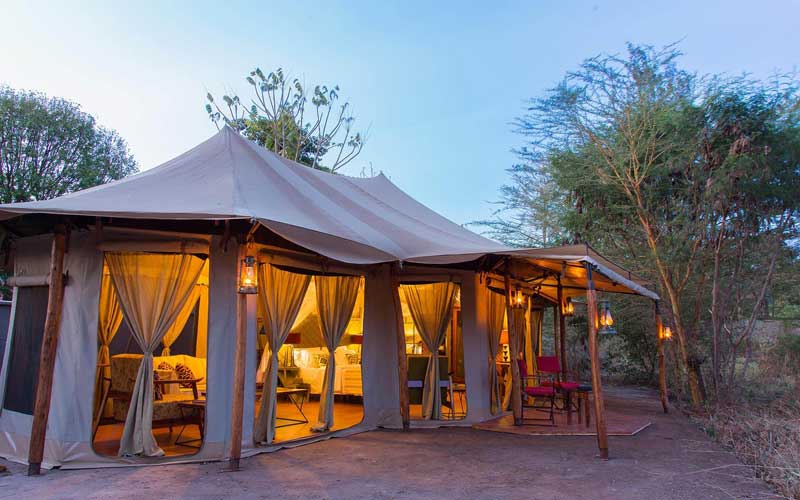
Lodges and Permanent Camps
There are permanent camps and lodges in the Serengeti National Park that have more facilities and creature comforts. This may be a good choice for families with young children as many have swimming pools and special children’s programmes to entertain the little ones between drives.
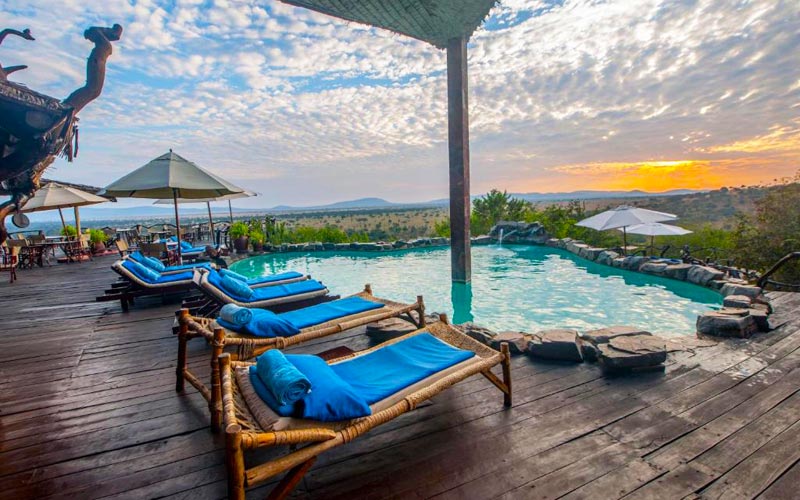
Mbalageti Safari Camp
Most permanent accommodation sites, including Sayari, Nomad Lamai and Lobo Lodge (which is more budget-friendly) are up north closer to the Mara River. Kusini Camp and Ndutu Lodge are in the south, and Singita has three camps on the Western corridor.
See lodge options.
Please Note: For reliable WiFi, lodges and permanent camps are your best bet.
Where to stay? Here are 5 of my favourite accommodation options in the Serengeti:
- Africa Safari Serengeti Ikoma
- Serengeti Serena Safari Lodge
- Ole Serai Luxury Camp
- Asanja Africa
- Melia Serengeti Lodge
See more Serengeti accommodation options.
How do I get to the Serengeti?
Most Serengeti safaris start in the town of Arusha. From here it takes around 8 hours to drive to the Serengeti National Park. It could be better to split the long drive by spending a night in one of the visit-worthy Ngorongoro Crater, Lake Manyara or Tarangire national parks.
If you're travelling in July-September time when the Wildebeest Migration is in the northern part of the Serengeti, it can be better to travel from the Kenyan side.
Finally, there is the option to charter a flight from Arusha.
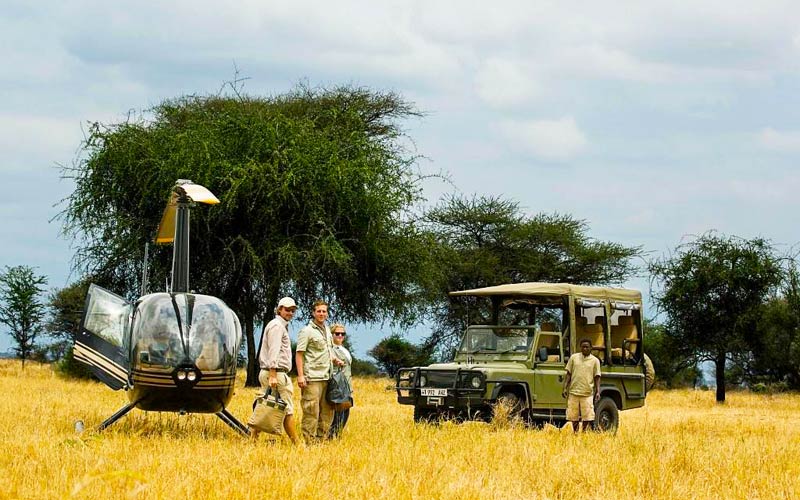
Here are details of shuttle flights flying from Arusha into the Serengeti.
Destination | Flight Duration | Cost Per Person* |
|---|---|---|
Seronera | 1.5 hours | $265 |
Kogatende | 2.5 hours | $402 |
Sasakwa | 2 hours | $385 |
*Costs are subject to change. These are just guide prices.
Please Note: small planes have strict baggage restrictions of 15kg per person, including any hand luggage and duffel bags. The costs are per person and are subject to change.
How safe is a Serengeti Safari?
Going on a safari in the Serengeti is a safe and fun experience. Always listen to your ranger’s instructions and note basic guidelines:
- Never go out walking outside of camp or alone after dark
- Keep your limbs and head inside the vehicle
- Do not make loud noises on a safari
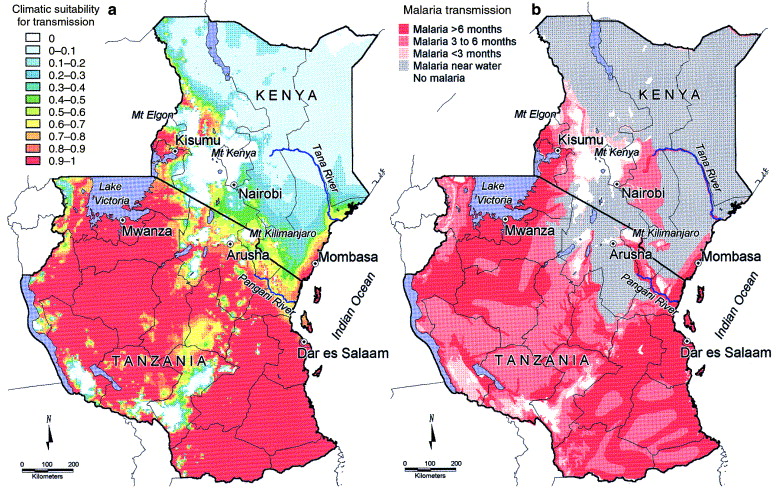
Please note: Malaria is a risk in Tanzania, so consult your doctor about medication options before setting off. Make sure to pack a first aid kit with necessities including band-aids, headache tablets and diarrhea medication.
What food will I get on a Serengeti Safari?
To make the most of game-viewing, you will be spending most of the day out in the vehicle. This means that meals will often be packed picnic-style – breakfasts, lunches and snacks along the lines of sandwiches or wraps, fresh fruit, cheese, cold meats, muffins and pastries.
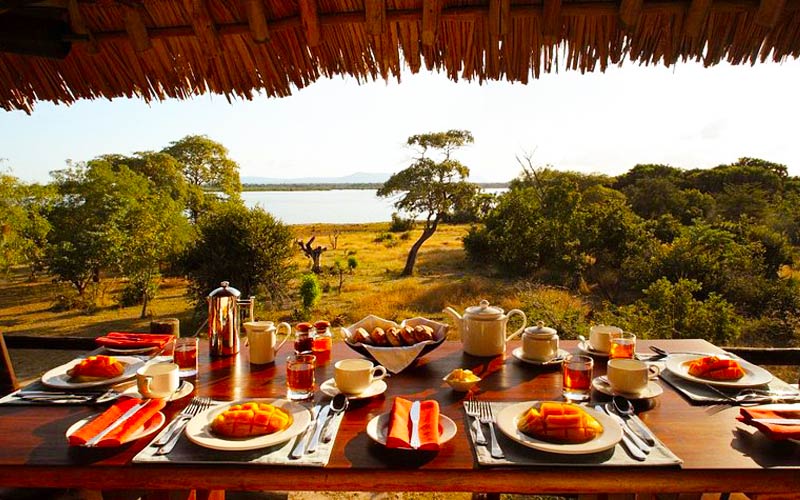
It is important to let your tour operator or camp chef know about any dietary requirements in advance. They will be happy to cater accordingly.
Please Note: It is illegal to feed the animals, take leftover food back with you to the camp.
